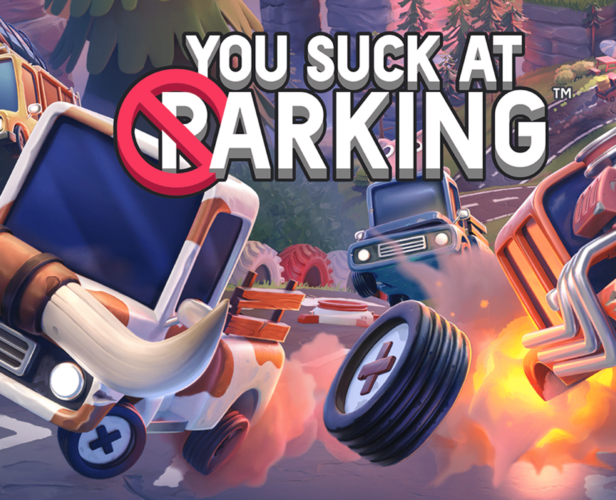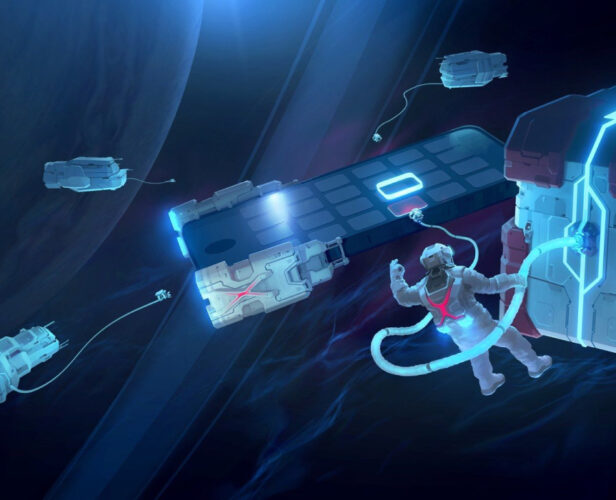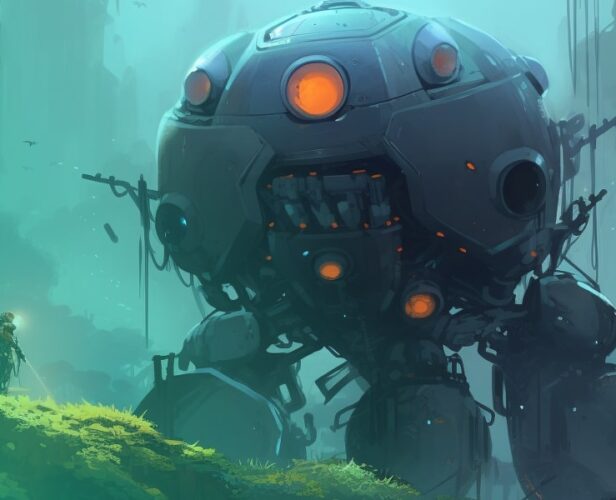Resources > All
Insights and tips about the games industry
Subscribe for gaming insights, industry reports and product updates delivered straight to your inbox.
#Game Design
Among Us VR dev talks about how to create immersive worlds
VR is all about immersion. It’s about allowing players to lose themselves in more than just a game, but a new world. You have to build VR experiences the right way to make this happen. This goal is always top-of-mind for Schell Games. In this interview, we spoke to Schell Games’ Vice President of Product, Charlie Amis, to learn their story. “For VR, you want to make the player feel like they’re actually in the world you’ve created. This isn’t as true or a high priority in PC and console games. If people start to lose that sense of presence and immersion, then a lot of the reason they put the headset on is hurt. They want to go to another world or be someone new. So you need to help them feel like they’re really there and really that...
#Ads & Monetization
Top 10 Hyper-casual Game Ad Networks in 2022 (Q4)
Editor’s note: This article was written and published by Tenjin. You can find their original version here. New year, new insights into the most innovative segment of the mobile gaming market: hyper-casual games! The much awaited “Hyper-Casual Benchmark Report” for Q4 2022 is here to provide you with up-to-date data on key performance indicators, user behavior, and trends in the hyper-casual gaming industry. This benchmark report consists of anonymized data collected by Tenjin and GameAnalytics for hyper-casual games in the date range of 01.10.2022 – 31.12.2022. So let’s dive in and explore what this report has to offer! Here’s a summary of the topics we cover: Ad Spend % by platform Median CPI by platform Top 10 countries & ad networks by ad spend on Android and iOS Median CPI for the top 10 countries & ad networks by ad spend on...
#GameAnalytics Updates
GameAnalytics achieves SOC2 Type II & ISO27001 information security standards
GameAnalytics is proud to announce that it has achieved SOC 2 Type II compliance in accordance with American Institute of Certified Public Accountants (AICPA) standards for Service Organizations also known as SSAE 18. Achieving this top security standard demonstrates that GameAnalytics pursues enterprise-level security for partners and customers’ data, safely processed within the GameAnalytics systems. GameAnalytics is also delighted to be officially certified for ISO/IEC 27001:2013 (ISO 27001)! This stands for an internationally recognized standard that ensures that our services and products meet the best practice for an information security management system. Using this collection of standards will help our organization manage the security of assets such as game insights, personal data, financial information, intellectual property, employee details and any information entrusted to us by third parties. We are committed to following the highest quality and consistent security management system,...
#Case study
Happy Volcano: why a growing studio picked Player Warehouse
A central location to come home to After launching You Suck At Parking, Happy Volcano wanted a central home for their analytics data. David Prinsmel, Happy Volcano’s game director, and their data engineer, Rahul Jani, found that Player Warehouse let them be more flexible around storing and processing their data. They could pull it all into one central location and then create their own visualizations off the back of that information. Here’s what they found along their journey. Focus on your onboarding process first If you want players to stick around, you need to make sure they feel comfortable in your game. So your onboarding process is vital to your success. Through their data, Happy Volcano realized that people were far more likely to drop off if they didn’t play through some of the single-player races before hopping over to multiplayer....
#Data & Analytics
How studios use DataSuite to find hit games
Learn how successful publishers evaluate hundreds of games per month, to find the next hit game.
#Game Design
How to build successful VR games as a solo developer
Building video games has never been a simple task. You can have a brilliant idea for a game, but without the right skills, tools and resources, it can be near-impossible to tackle by yourself. Especially if we consider something as complicated and new as virtual reality. Not that this stopped Sergio Hidalgo. Being a one-man studio, Sergio managed to produce, release, and publish two successful VR titles. His first title, Dreadhalls, sold up to 250,000 units worldwide, and hit over 60,000 concurrent viewers on Twitch. (For comparison, Team Fortress 2’s highest was around 80,000.) While Cosmodread has had approximately 25,000 players on Steam alone. So to get his advice and learn his secrets, we sat down to hear his story and journey as a solo-game developer. Here’s what he had to say. 1. You don’t have to have it all...
#Game Design
Splitting Point: how Field Trip Z got 45M players on Roblox this year
We recently spoke with Janzen Madsen, founder at Splitting Point Studios, to get his perspective on how to develop a hit on Roblox. Splitting Point has created multiple experiences, including Field Trip Z which this year alone saw more than 45M unique players. Janzen is intimately familiar with what makes a Roblox experience a success. Roblox is an absolutely massive platform, with over 32 million experiences and 52 million active users. But making a game there is unlike making a game anywhere else. It’s much faster paced, the audience is much younger, and it’s much more tricky to design. The typical principles you might expect are quite different. 1. Don’t make it like a mobile game “Often, developers coming from the mobile gaming industry will assume that they can replicate their success by rebuilding their games on Roblox. This just...
#Game Design
Fruit Ninja dev talks porting to VR
Obsessed with making games that people will remember for a lifetime, Halfbrick decided to convert their hit title, Fruit Ninja, into a VR game. It was a natural evolution – people apparently really enjoy slicing fruit and swinging swords. After that success, they created Fruit Ninja VR 2 – adding more features and exploration to the game. “Making a game for VR is very, very different,” said Liam Potter, one of the lead gameplay programmers on Fruit Ninja VR 2. “There are a lot of things you need to take into account that you just don’t for console or mobile.” With that in mind, let’s dive into those challenges and see what Liam advises. Show players the play space early In a VR experience, it’s incredibly difficult to make sure that players are looking where you want. Gamers notoriously fail...
#Case study
How Splitting Point caught 80% more bugs with real-time data
Catching 80% of their bugs One of the main reasons that Splitting Point integrated GameAnalytics was because of our bug-tracking capabilities through our error reporting dashboard. This was particularly important to the studio as the Roblox platform is extremely fast-paced. They would be updating their game every week, and finish the changes two hours before the deadline. “We were pumping out updates every week on a Friday – and probably about 80% of the bugs we caught were because we were using GameAnalytics,” Janzen Maden, founder at Splitting Point, explained. Quite simply, there was no time for quality control. And it was also too complicated with such a small team. Soon, Splitting Point realized that they could find more than just bugs. They could check logical problems in the game design itself by using custom design events. “With Field Trip...
#Game Deconstructions
14 low-budget, highly successful story games
One of the reasons why hyper-casual games are so popular is due to how quick and easy they are to make. Simple controls, artwork, and game design make it easy for any developer to pick up. But hyper-casual isn’t the only way to go. There are other ways to build a game on a budget. One way is narrative. We’ve talked a lot about how to add new layers to your games by simply layering in a story. And we discussed how you need three Cs: character, conflict and change for your narrative. This time, we’ll look at the top games that use storytelling as a core mechanic and show you that you don’t need sparkling design and intense gameplay to create a hit. You just need an extra C: Choice. Because choice is how you can differentiate a book...
#Game Deconstructions
Top gamification examples in mobile apps
We learn by playing. When we enter the world, we’re full of curiosity, and play has always been at the centre of how we satisfy that curiosity. Sadly, it’s beaten out of us when we go to school, and taking tests suddenly becomes a chore. But it doesn’t have to be. It’s possible to learn while having fun. In fact, that’s exactly what some apps are doing. And it’s working. Games are the most popular genre on the app store. They’re masters in the art of keeping users engaged and happy. So how can we learn from them? What is gamification? You’ve probably heard the term ‘gamification’ before. But if you haven’t, it’s the act of taking gaming elements and mechanics and applying them to your non-gaming app. Often to ramp up retention and engagement. And it works. If we...
#Ads & Monetization
How ‘On Ice!’ got 95% of its installs from a single playable ad
Editors note: This article was originally written and published by Mindworks, a leading self-service creatives platform from Mintegral. You can find their original version here. Mindworks is giving GameAnalytics users exclusive trial access to create countless playables and advertise them for free with Mintegral. Hurry, this amazing offer is for a limited time only. Activate your free Playturbo trial How powerful can a premium playable ad be when it comes to user acquisition? Quite powerful, actually. Here is an example: a single playable ad created by Mindworks generated the lion’s share of downloads for ITI Studio’s game ‘On Ice!’. ITI: top hyper-casual developer with high quality standards for its ad creatives ITI is a well-known hyper-casual mobile gaming developer in the Japan market. Its hit title Rescue Cut, released in 2019, was named one of the best games of the...
#Marketing & Publishing
Hyper-casual bible: top resources for making a hit game
Building hyper-casual games is a great way to get into game development. With their short cycles and simple gameplay, crafting a hyper-casual title means you can learn important skills across game design and monetisation, which you’ll need for success in the mobile games industry. But how do you get started building a hyper-casual game? What exactly goes into creating a hit in this genre? What KPIs should you track and what results should you be aiming for? There’s a lot you should know before getting started. So before you get tapping away and developing your next hit, make sure to read through these resources to master everything ‘hyper’. 1. Understanding hyper-casual The hyper-casual genre is a unique one. It’s made up of short, satisfying, and simple gameplay, basic artwork, and relies heavily on ads to make money. So to kick...
#Editor's pick
Game data pipeline: Building vs buying
As a large number of studios, publishers, and game developers are heavily relying on data to guide their decisions, they need to decide between building or buying. But which one is more efficient? To assist you in understanding the Total Cost of Ownership (TCO), we broke down the following key considerations: Setup requirements Cost calculation Team needs and recruitment
#Editor's pick
Mobile gaming benchmarks for Q1 2024
Uncover the industry’s performance with Q1 2024 benchmarks. Explore key metrics like retention rates and session engagement to benchmark your games against industry standards. What’s inside? Retention benchmarks for casual, classic, and mid-core games Session length benchmarks for games launched in North America, Europe, the Middle East, and Asia Session count benchmarks across 15 game genres
#Editor's pick
Grow your revenue with Xsolla Web Shop for Mobile Games
“Xsolla anticipated this seismic shift earlier this year, when we launched multiple products that are being actively used by some of the world’s largest game companies to increase profit and build closer relationships with their mobile and pc players. We’ve now combined these products and learnings into an elegant new solution called Xsolla Web Shop for Mobile Games,” said Chris Hewish, President of Xsolla. Through Xsolla Web Shop for Mobile Games, developers can expect significant revenue growth and can reach new players in new geographies previously unavailable to them. This solution solves many challenges developers face; such as discoverability, declining profit margins, lack of control over the user experience, access to localized payment methods, cross game marketing, more efficient user acquisition, effective collaboration with creators and influencers, and much more. Three industry-changing announcements make this opportunity more timely than ever:...
#Editor's pick
2023 Roblox report: Behind the data with GameAnalytics
Download a comprehensive report of Roblox player behavior and game performance based on GameAnalytics data from 2023. This report highlights critical benchmarks and insights to help Roblox creators optimize their games. What’s inside? Devices analysis Players’ daily session frequency Average revenue spent per user Session length and count benchmarks Retention benchmarks Revenue benchmarks
#Editor's pick
The Game Developer’s Handbook to Mastering Data Solutions
Data is the key to success in the ever-evolving landscape of game development. Explore this guide to transform your data into insights using our turn-key data solutions. What’s inside? Our comprehensive guide explores cost-saving strategies and real-world applications for advanced use cases. Learn how to seamlessly integrate data sources, unlock detailed player insights with Player Warehouse, access real-time data with Raw Export, and ensure data privacy compliance.
#Case study
Developing a #1 VR MMO: Ramen VR’s Journey with GameAnalytics
Discover how Ramen VR used data-driven game development to launch "Zenith: The Last City", which became the #1 bestselling game all major VR platforms—including Meta Quest/Rift, Steam and PlayStation VR.
#Editor's pick
Using AI to Supercharge Your Game Art Design
Discover how tweaking AI tool settings can help you generate varied art styles, produce better concepts, and speed up the process from prototype to final design. With AI on your team, creating unique game art has never been easier or faster.
#Editor's pick
Event Design & Tracking Guide for GameAnalytics
Learn how to create an adaptable tracking plan, enabling you to unlock richer insights and maximize the value of your data within GameAnalytics.
#Editor's pick
How studios use DataSuite to find hit games
Learn how successful publishers evaluate hundreds of games per month, to find the next hit game.
#Editor's pick
Among Us VR dev talks about how to create immersive worlds
VR is all about immersion. It’s about allowing players to lose themselves in more than just a game, but a new world. You have to build VR experiences the right way to make this happen. This goal is always top-of-mind for Schell Games. In this interview, we spoke to Schell Games’ Vice President of Product, Charlie Amis, to learn their story. “For VR, you want to make the player feel like they’re actually in the world you’ve created. This isn’t as true or a high priority in PC and console games. If people start to lose that sense of presence and immersion, then a lot of the reason they put the headset on is hurt. They want to go to another world or be someone new. So you need to help them feel like they’re really there and really that...
#Editor's pick
GameAnalytics H1 Update: New Product Improvements!
It’s been a busy time since February, when the largest update in GameAnalytics history was launched. Read on for more information about what’s changed recently, and new functionality coming to the platform very soon.
#Case study
How TapNation uses DataSuite to increase the LTV of 19 hit games by 50% in only 6 months
Smashing obstacles with Giant Rush While they’ve seen huge improvements using DataSuite across their portfolio, one game stands out in particular: Giant Rush. (And not just because the character is huge.) The title has now reached over 140 million downloads. And, through a series of A/B tests and insights from the data they collected, they’ve been able to increase the LTV by a whopping 200% over six months for this specific title. “It’s because we A/B test every day,” Philippe Grazina from TapNation says. “We ask questions like: When are players leaving the game? For example, the boss in Giant Rush. If we spot that they’re leaving at the same point every time, we know we need to make a change. Small details like that really help.” Through these granular insights, TapNation can iterate and improve on their game step...
#Editor's pick
How to Build a Data Warehouse for Games from Scratch
Over our last couple of blogs around data warehouses, we’ve explained how they let you analyze data from across your portfolio and look at what insights you can gather from them. Now, we’ll dive into how to build a data warehouse. What steps do you need to take and what resources will you need? To figure this out, we’ve rounded up the costs, steps, and tools we think you’ll need to get started. Please note, that we haven’t included the cost of running an engineering department (which you’ll need), which can end up being a lot of $$$. What do I need to get started? Before you start, you’ll need to ensure you have the right people. You’ll likely need a software or data engineer, and perhaps an architect or DevOps engineer. You’ll also need to budget for tools like...



























